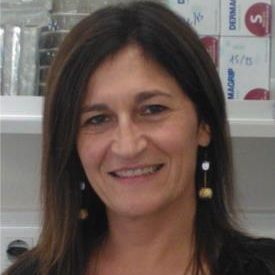Cellular and Molecular Biology of Cancer Stem Cells
A special issue of International Journal of Molecular Sciences (ISSN 1422-0067). This special issue belongs to the section "Molecular Biology".
Deadline for manuscript submissions: closed (10 October 2023) | Viewed by 38685
Special Issue Editors
Interests: cancer stem cells; drug resistance; self-renewal pathways; metastasis; theranostics; exosomes; solid tumors
Special Issues, Collections and Topics in MDPI journals
Interests: cancer stem cells; bone sarcomas; solid tumors; cancer chemoresistance; scientific communication
Special Issues, Collections and Topics in MDPI journals
Special Issue Information
Dear Colleagues,
Cellular and molecular heterogeneity is a well-recognized feature of cancer. In fact, phenotypic plasticity contributing to that heterogeneity was recently coined as a new hallmark of cancer, which is conveyed by cancer stem cells (CSCs). CSCs are capable of generating diverse cell progeny that feed the tumor mass, and simultaneously are the culprits behind cancer evasion from the deleterious effects of chemo and/or radiation therapy, explaining the almost inevitable recurrence of several tumors. New insights into stem cell biology make the CSC concept more realistic, and understanding how tumor cells acquire these features has inspired the development of innovative strategies aiming to eradicate CSCs.
In this Special Issue of IJMS, “Cellular and Molecular Biology of Cancer Stem Cells”, we welcome original contributions and review articles that focus on:
- Molecular and cellular mechanisms governing CSCs biology, namely: self-renewal signaling pathways, metabolic plasticity and cell cycle regulation;
- Molecular drivers and mechanisms underlying CSCs therapy resistance and metastatic dissemination;
- Microenvironmental regulators of cancer cell plasticity and mutual interconversion between cancer stem and non-stem cancer cells;
- Emerging strategies of drug repurposing or repositioning and their effects on the behavior of CSCs, as well as strategies to therapeutically target CSC while sparing normal stem cells.
Dr. Célia Maria Freitas Gomes
Dr. Sara R. Martins-Neves
Guest Editors
Manuscript Submission Information
Manuscripts should be submitted online at www.mdpi.com by registering and logging in to this website. Once you are registered, click here to go to the submission form. Manuscripts can be submitted until the deadline. All submissions that pass pre-check are peer-reviewed. Accepted papers will be published continuously in the journal (as soon as accepted) and will be listed together on the special issue website. Research articles, review articles as well as short communications are invited. For planned papers, a title and short abstract (about 100 words) can be sent to the Editorial Office for announcement on this website.
Submitted manuscripts should not have been published previously, nor be under consideration for publication elsewhere (except conference proceedings papers). All manuscripts are thoroughly refereed through a single-blind peer-review process. A guide for authors and other relevant information for submission of manuscripts is available on the Instructions for Authors page. International Journal of Molecular Sciences is an international peer-reviewed open access semimonthly journal published by MDPI.
Please visit the Instructions for Authors page before submitting a manuscript. There is an Article Processing Charge (APC) for publication in this open access journal. For details about the APC please see here. Submitted papers should be well formatted and use good English. Authors may use MDPI's English editing service prior to publication or during author revisions.
Keywords
- cancer stem cells
- self-renewal signaling
- metabolic regulation
- cell cycle regulation
- cancer cell plasticity
- phenotypic switching
- resistance to therapy
- targeted therapies
- drug repurposing







